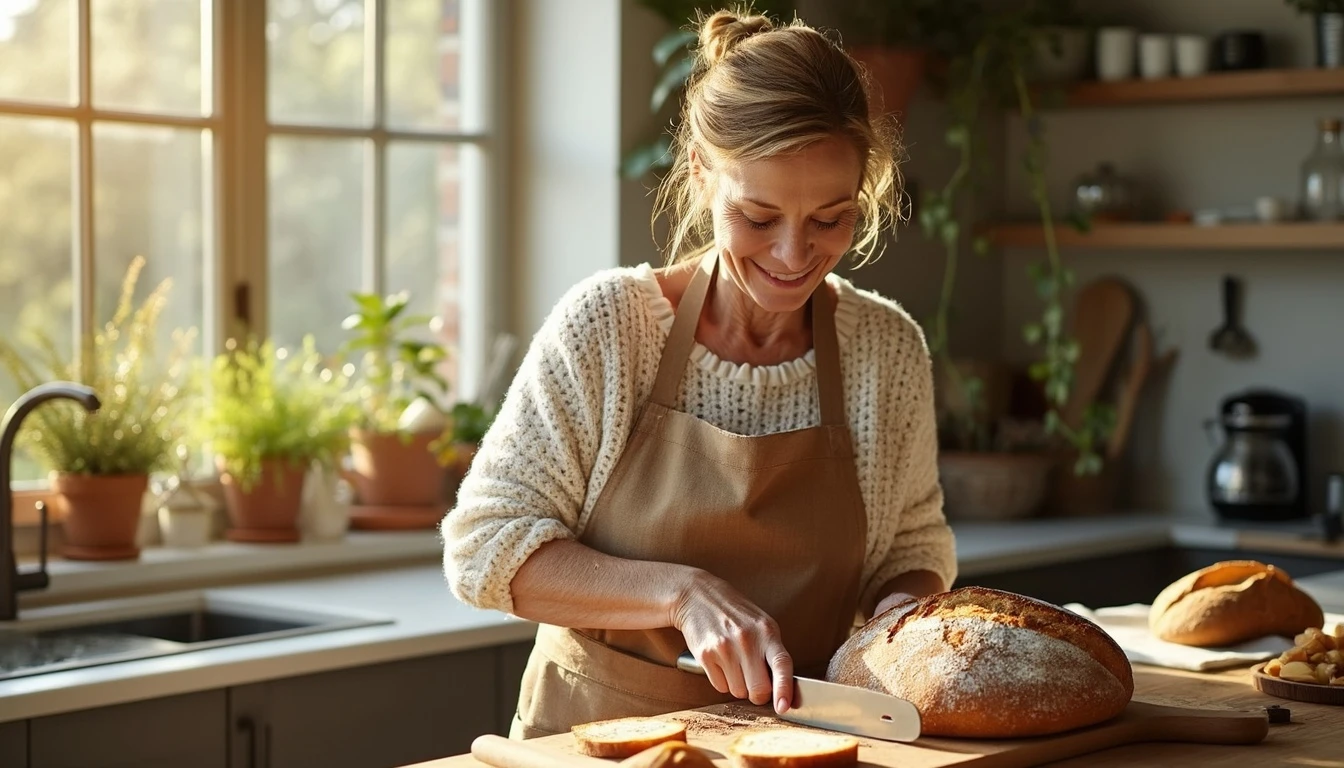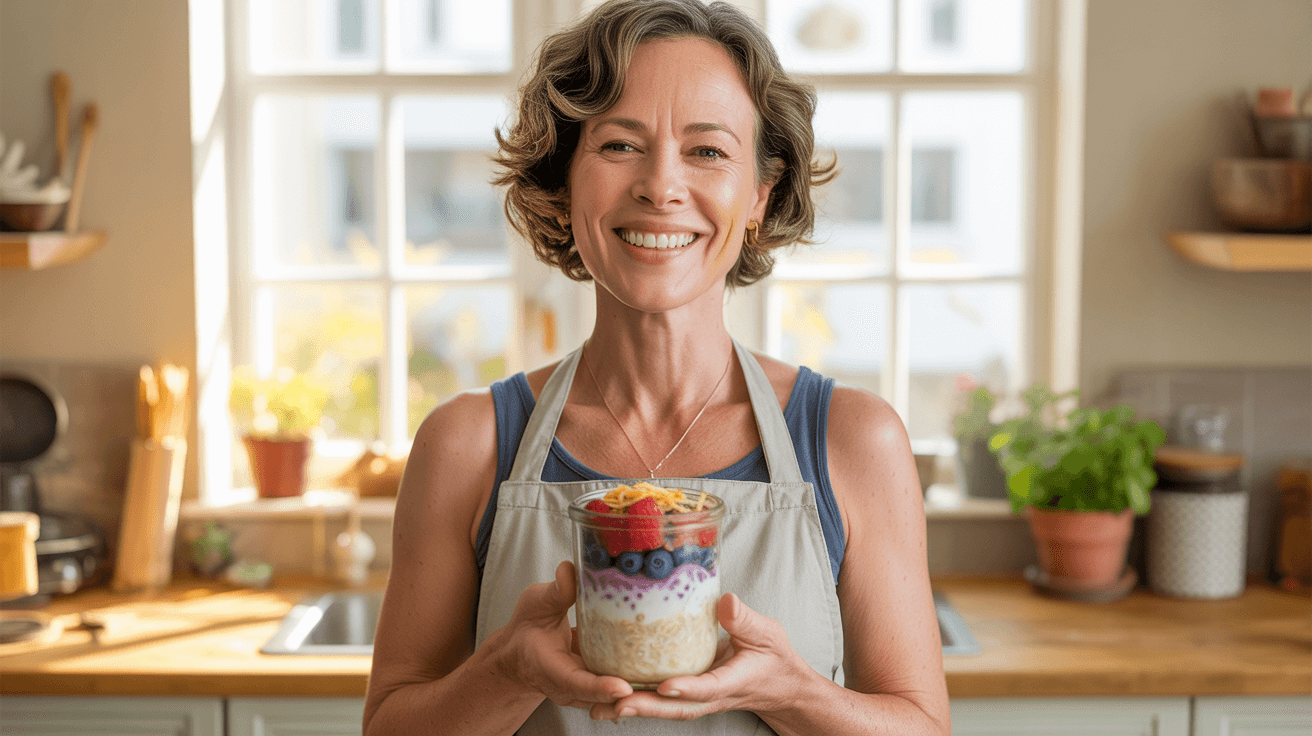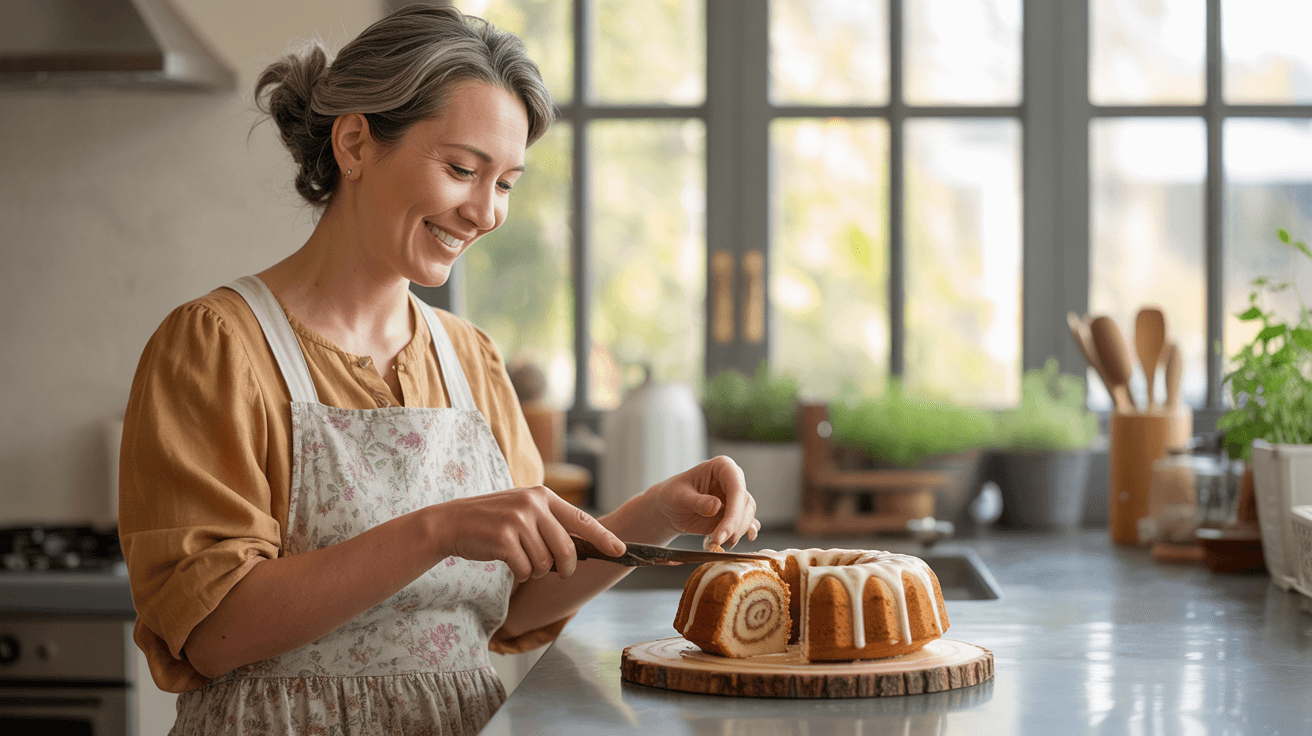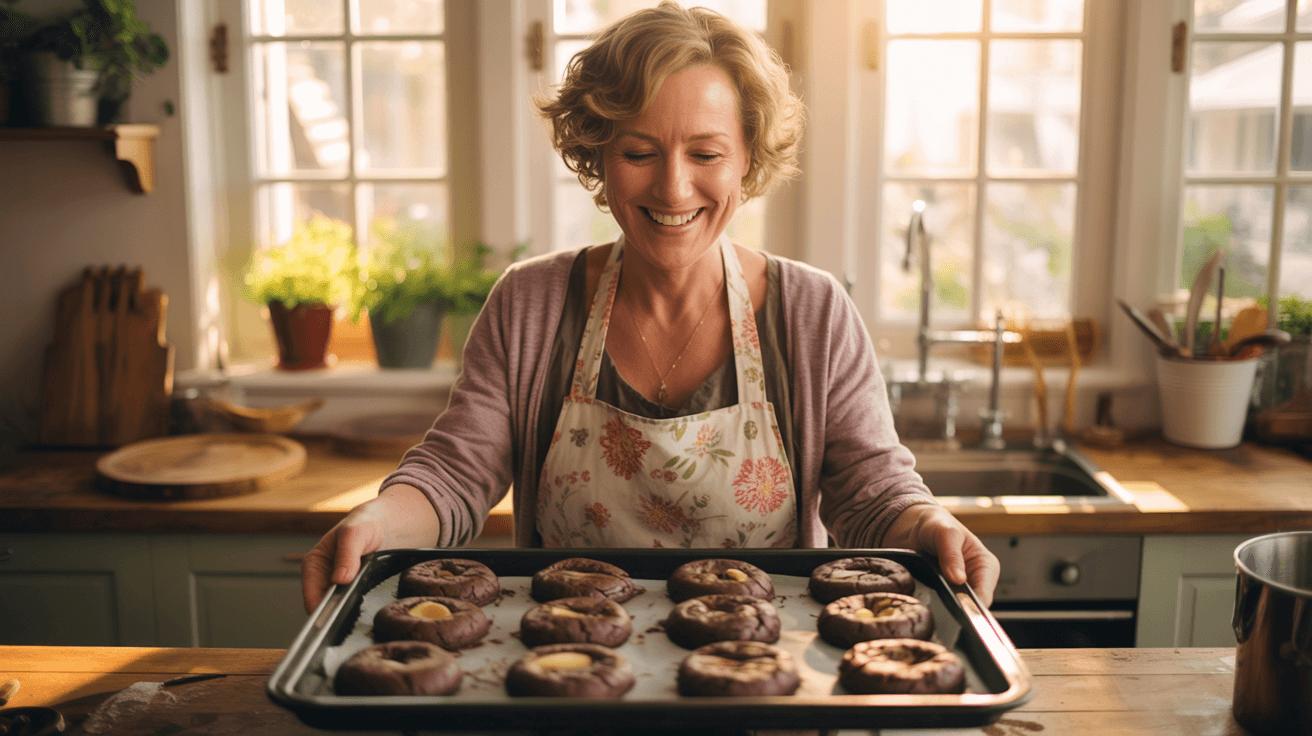Phil’s Sour Sam Sourdough Bread (Early Bird Farm Variation)
One of the most influential people in my journey was my dear friend and mentor, Phil Turner. Phil often said, “Making a good sourdough bread is a craft, like making a good French baguette or croissant. A craft is defined as the ability to create a good product predictably and repeatedly.”
My conversations with Phil taught me many things, but perhaps the most important was patience. This is clearly manifested when baking artisanal sourdough bread—sourdough bread is more than nutritious food; it’s patience, tradition, and nature working in harmony.

His wisdom and encouragement continue to guide me, and it’s my honor to share the techniques he taught me with you.
As you read this article, you’ll see that baking artisan sourdough bread is a journey, and I’m here to guide you through it.
Stick with me, and we’ll turn flour, water, and salt into something extraordinary.
What Makes This Recipe Special?
Artisan sourdough bread is more than just a recipe – it’s an expression of skill and care. By using organic, freshly milled flours and allowing time for fermentation, we achieve complex flavors and a crust that sings when tapped. My approach ensures the process fits your rhythm, no matter the season.
“Bread baking is a slow dance with time,” says Chad Robertson, renowned baker and author of Tartine Bread. “The more you learn to listen to the dough, the better your bread will be.”
What is Levain?
Levain is a mixture of flour, water, and a portion of sourdough starter that is allowed to ferment before being incorporated into your dough. It acts as the primary leavening agent in sourdough bread, providing natural yeast and beneficial bacteria that create flavor, texture, and rise. Think of it as a supercharged starter designed to give your bread its best qualities.
Why We Use Weight, Not Volume

As an artisan baker, precision is your best friend. That’s why this recipe uses weight instead of traditional volume measurements. Here’s why this approach can elevate your bread-making game:
- Consistency: Measuring by weight ensures that every batch of dough is consistent. Flour, for example, can vary significantly when measured by volume, depending on how it’s packed.
- Accuracy: Small discrepancies in ingredients can alter the hydration level of your dough, affecting its structure and flavor. Using a scale eliminates the guesswork.
- Professional Techniques: Artisan bakers around the world rely on weight-based measurements to achieve the exacting standards required for exceptional bread. It’s the method used in bakeries and competitions alike.
By adopting this method, you’re not just baking; you’re honing a skill that connects you to a lineage of craftspeople dedicated to excellence.
Ingredients List: The Building Blocks of Flavor
Dough Starter:
- 50 grams sourdough starter
- 220 grams of filtered water (room temperature)
- 125 grams Early Bird Farm All Purpose Flour
- 125 grams Early Bird Farm Espresso Hard Red Wheat Flour
Dough:
- 500 grams Early Bird Farm All Purpose Flour
- 300 grams Early Bird Farm Whole Wheat Flour
- 100 grams Early Bird Farm Rye Flour
- 675 grams filtered water (adjust temperature seasonally)
- 21 grams of sea salt
- 250 grams levain (from starter preparation)
- ¼ tsp instant yeast (optional, for cold winter months)
- Optional – replace the flour with 900 grams of Phil’s Legacy Bread Blend
Step-by-Step Guide to Artisan Sourdough Bread
1. Prepare the Starter (7:30 AM)
Place 50 grams of sourdough starter in a clean container. Add 220 grams of filtered water and the flours (125 grams each of Early Bird Farm All Purpose Flour and Espresso Hard Red Wheat Flour). Mix thoroughly, cover, and let it rest at room temperature for 8-10 hours. This will create 250 grams of levain for the dough while leaving enough starter to sustain future batches.
2. Begin the Autolyze (5:00 PM)
Combine 500 grams of All Purpose Flour, 300 grams of Whole Wheat Flour, and 100 grams of Rye Flour in a large bowl. Add 675 grams of filtered water. Mix until all the flour is moistened. Cover the bowl and let the mixture rest for 20-60 minutes. This step activates the enzymes in the flour, improving flavor and gluten development.
3. Make the Dough (6:00 PM)
Add 250 grams of levain and 21 grams of sea salt to the autolyzed mixture. If it’s winter, include ¼ teaspoon of instant yeast for extra leavening. Knead the mixture using a stand mixer for 10-15 minutes or by hand until the dough becomes smooth and elastic. Transfer it to a large wooden or ceramic bowl to begin the bulk fermentation.
4. Master the Folding Process (6:30-8:00 PM)
Perform three folds during the bulk fermentation at 30-minute intervals. To fold, uncover the dough, grab a portion from one side, stretch it up, and fold it over itself. Rotate the bowl slightly and repeat 4-8 times per fold. The dough will develop elasticity and structure with each fold. After the third fold, let the dough rise until it has doubled in size. This step typically takes an additional 60 minutes in winter.
5. Shape the Loaves (8:30 PM)
Lightly flour a work surface. Divide the dough into two equal portions and shape each into a tight boule. Use the edges of your hands to tuck and tighten the surface of the dough, ensuring the seams are at the bottom. Place each boule seam-side down into a floured banneton. Enclose each banneton in a large plastic bag to prevent drying out, and refrigerate overnight for an 8-10 hour proof.
6. Bake Your Masterpiece (6:00 AM)
Place Dutch ovens in your kitchen oven and preheat to 475°F. Allow the Dutch ovens to heat for an additional 15-30 minutes to ensure they’re fully up to temperature. Remove the dough from the refrigerator, dust the tops lightly with flour, and gently tip each boule into the preheated Dutch ovens. Cover with the lids and return to the oven. Bake for 25 minutes, then reduce the temperature to 450°F, remove the lids, and bake for another 15 minutes at 460°F. The loaves are done when they reach an internal temperature of 205°F. Let them cool on a wire rack for 30-60 minutes before slicing.
Tips for Success
- Use fresh, organic flours like Early Bird Farm’s for the best flavor.
- Keep your starter active by feeding it regularly.
- Adjust water temperature and rising times based on the season.
Sourdough Bread FAQs
You likely have questions. Hopefully, the following questions we hear when manning our booth at the farmer’s market will answer them. If not, please contact us.
Freshly milled organic flour, like Early Bird Farm’s whole wheat or rye, provides superior flavor and nutrition.
The wild yeast in sourdough works slower than commercial yeast, allowing for better flavor and digestibility.
The dough should have risen and be slightly springy to the touch. A cold overnight proof ensures it’s ready for baking.
Folding is crucial for building structure and strength in the dough. Don’t skip it!
Artisan Sourdough Bread: The Reward of Patience
Crafting artisan sourdough bread connects you to a time-honored tradition, transforming simple ingredients into something extraordinary.
This journey, while requiring patience and precision, offers immense rewards: the rich, complex flavors and crisp, satisfying crust of a homemade loaf.
You enhance every element of the baking process by utilizing organic, freshly milled flours and mastering techniques like levain fermentation and dough folding. The unique satisfaction of baking with natural ingredients and hands-on methods is matched only by the delight of sharing your creations with loved ones.
Don’t shy away from this endeavor—embrace the challenge, savor the process, and enjoy the unparalleled flavor of homemade sourdough. Your journey will be filled with learning and tasting moments that lead to a deeper appreciation for this culinary craft.
Bakers are encouraged to share their masterpieces on Instagram, tagging #EarlyBirdFarm, to celebrate their achievements with a community that values tradition and quality.
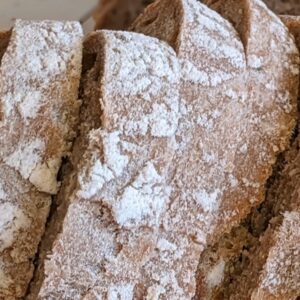
Phil’s Sour Sam Sourdough Bread (Early Bird Farm Variation)
Equipment
- Dutch Ovens with flat top, e.g., Lodge L8DD3 Cast Iron Dutch Oven, 5 qt (flat top) or equivalent
- 2 quart acrylic containers with lids
- Round 10” bannetons
- Bench knife (steel)
- Bowl scrapper (plastic)
- Instant-read thermometer
- Wooden bowl with cover (wood bowls seem to work best because of their insulating qualities, but any large bowl will do. I use a large, 14”, wooden salad bowl)
- Stand mixer/hand mixer (if you make a lot of bread, a stand mixer is a godsend)
- Space in refrigerator (set to approximately 40 degrees) for two bannetons
- Scale (in grams)
- Large plastic bags for sealing the proofing containers (bannetons)
Ingredients
Part 1
- 50 grams starter
- 220 grams filtered water at 70+ degrees (room temperature)
- 125 grams Early Bird Farm All Purpose Flour
- 125 grams Early Bird Farm Espresso Hard Red Wheat Flour
Part 2
- 500 grams Early Bird Farm All Purpose Flour
- 300 grams Early Bird Farm Whole Wheat Flour
- 100 grams Early Bird Farm Rye Flour
- 675 grams water (75-85 degrees- cooler in summer/warmer in winter)
Part 3
- 1,575 grams autolyze
- 21 grams salt
- ¼ tsp instant yeast (winter)
- 250 grams levain
Instructions
Prepare the Starter (7:30 AM)
- Mix 50g sourdough starter, 220g water, and 125g each of all-purpose and hard red wheat flours. Cover and let rest 8-10 hours.
Autolyze (5:00 PM)
- Combine 500g all-purpose, 300g whole wheat, 100g rye flour, and 675g water. Mix well, cover, and rest for 20-60 minutes.
Mix the Dough (6:00 PM)
- Add 250g levain, 21g salt, and optional ¼ tsp yeast. Mix until smooth and elastic. Transfer to a bowl for fermentation.
Fold During Bulk Rise (6:30-8:00 PM)
- Perform 3 folds at 30-minute intervals. Stretch and fold the dough to build structure, letting it double in size.
Shape Loaves (8:30 PM)
- Divide dough, shape into boules, and place in floured bannetons. Cover and refrigerate overnight (8-10 hours).
Bake (6:00 AM)
- Preheat Dutch ovens at 475°F. Transfer dough to hot Dutch ovens, bake covered for 25 minutes, then uncovered at 450°F for 15 minutes. Cool before slicing.

